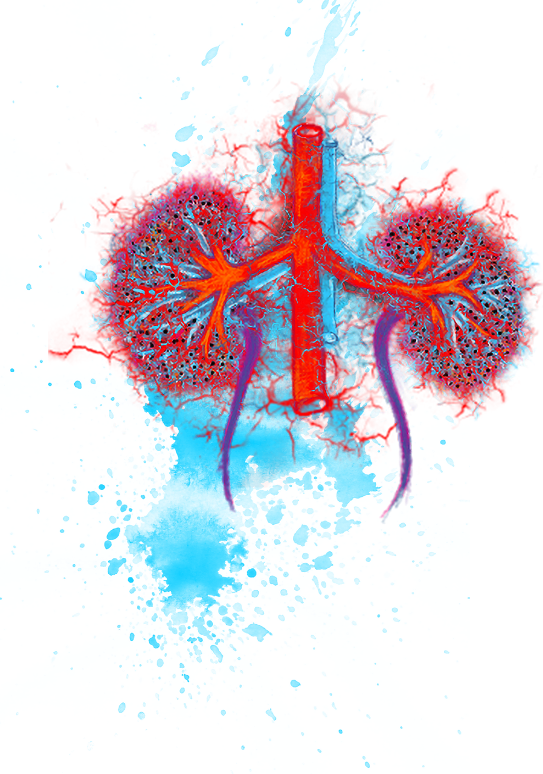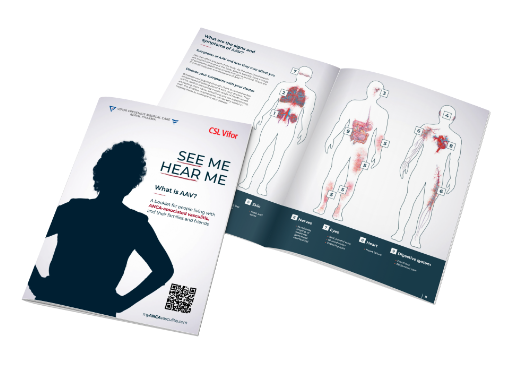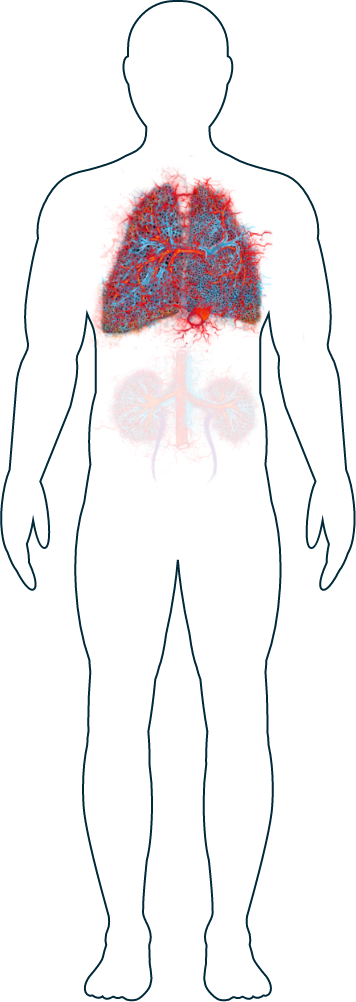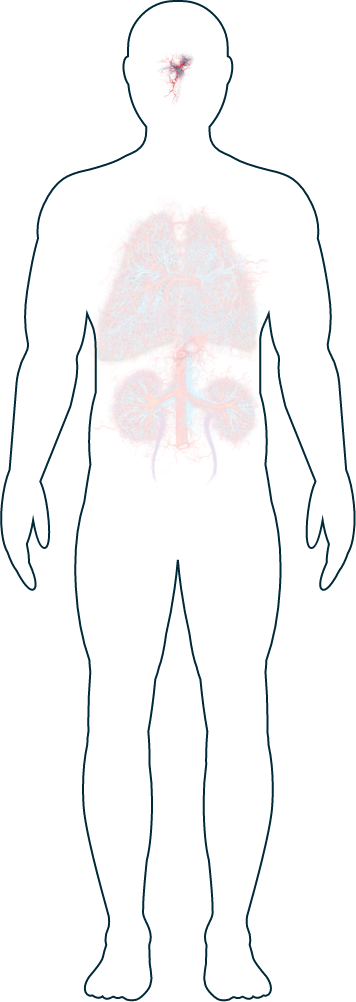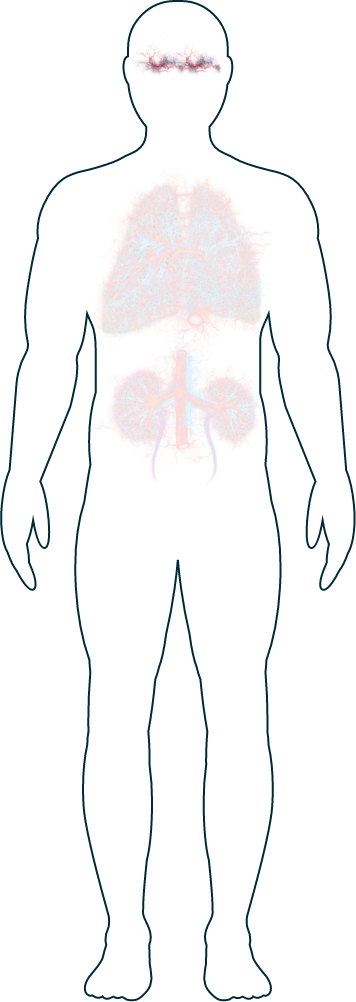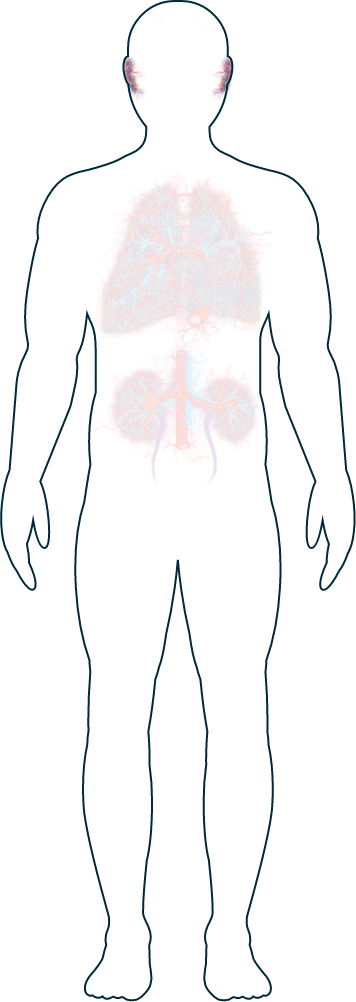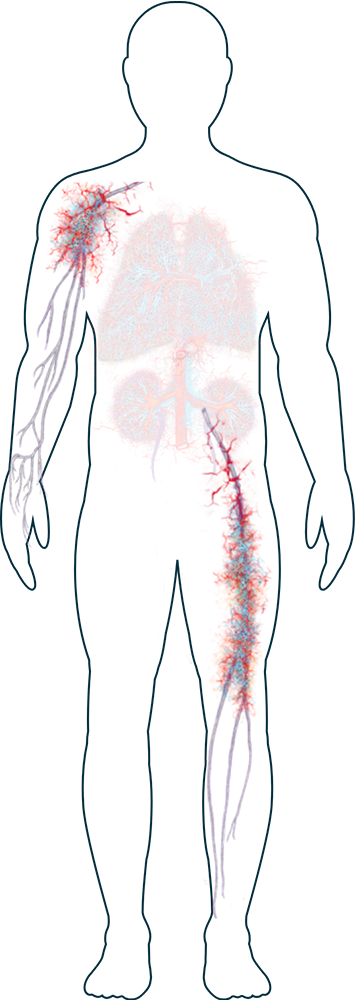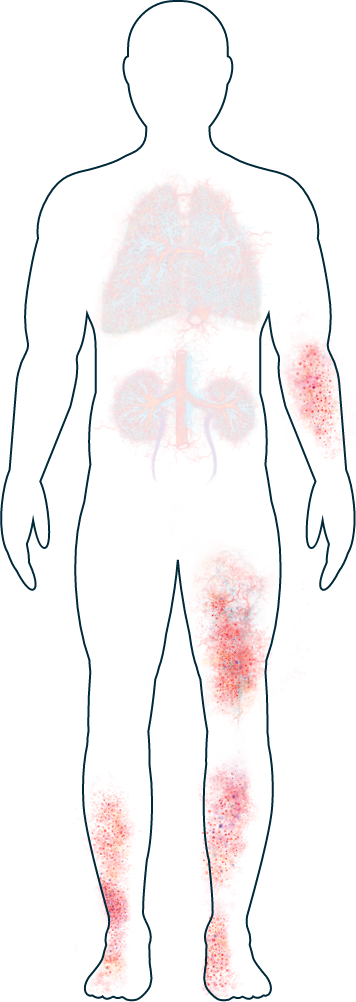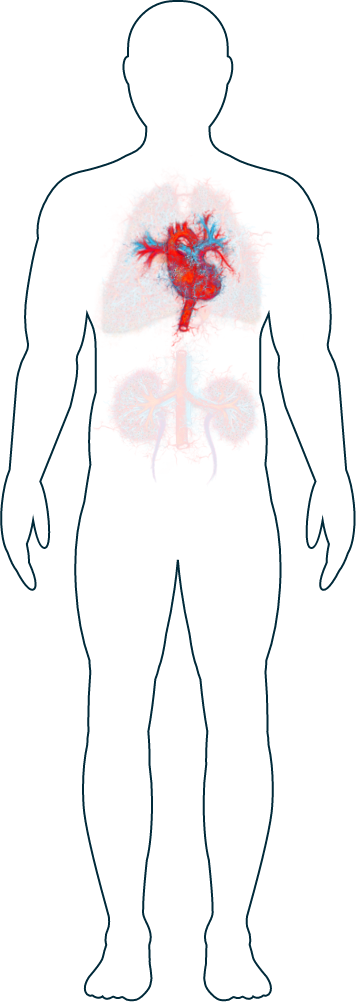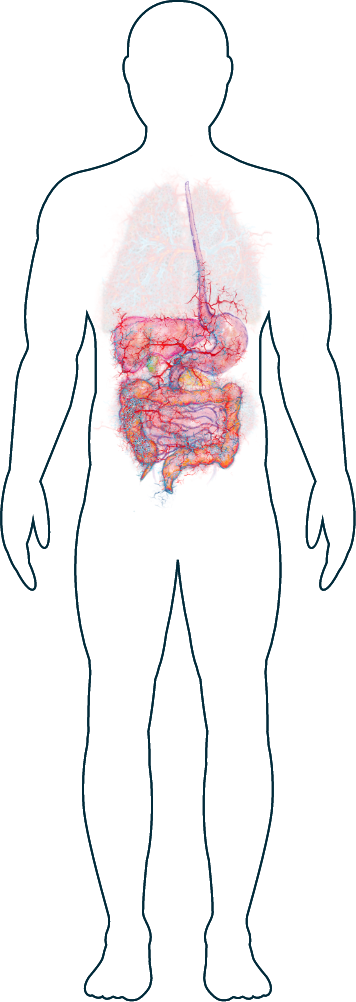What are autoimmune diseases?
Autoimmune diseases occur when the immune system, which usually defends the body against infection using antibodies, becomes overactive and creates autoantibodies. These attack ‘good’, healthy cells, leading to inflammation.1
The immune system makes antibodies to fight infection. These act like the immune system’s watchmen – they target specific things which the body sees as foreign (like bacteria or germs) so the immune system can then attack them. This is also what happens after vaccination (such as for flu or measles) – you develop an antibody which will stop that specific infection immediately before it develops fully.1
In people with autoimmune diseases, an antibody develops to a specific part of their own cells (a protein). These are called autoantibodies and there are different types involved in different autoimmune diseases.1
In AAV, an autoantibody called ANCA develops to an antigen (a protein) contained in neutrophils (a type of white blood cell). ANCA stands for Anti-Neutrophil Cytoplasmic Antibodies.2
When ANCA attaches to neutrophils, it activates them, which leads to inflammation – this is not supposed to happen, as the inflammatory process is designed to fight infections and not be activated in this way.2,3
Next, the neutrophils activate the complement system (which is made up of a series of proteins that interact with each other). When a protein within the complement system called C5a is activated, it attracts more neutrophils to the inflammation site and makes them ready to be activated.2,3
The neutrophils stick to and penetrate the blood vessel’s walls and release a range of proteins. Although the proteins aim to fight infection, in these circumstances they instead lead to inflammation in and around the vessel wall.2,3
A cycle of inflammation occurs, driven by neutrophils and the complement system, and causes damage to blood vessels. Over time, the immune system’s processes help control the inflammation but there is scarring of the tissue involved as its blood supply has been affected.2,3
Read more
References and footnotes
What causes AAV and how will the condition progress?
Rina - MPA, Netherlands
The initial causes of AAV are not clear, but various factors are thought to increase people’s likelihood of getting the condition. These include:1,2
Microbial infection
A type of infection caused by small (micro) organisms, such as bacteria, is often thought to be the trigger
Genetics
The physical and behavioural characteristics, including medical conditions, that people inherit from their parents
Environmental causes
For example, exposure to various chemicals and construction materials may have a role
Medication
Certain medicines or recreational drugs that people may have taken
AAV can be a progressive disease which means that the damage can gradually become more severe over a period of time.1,3 This will happen when the disease is active or you are going through a phase of relapse.4 You may also experience a disease flare, meaning that your symptoms suddenly become worse for a short period of time. When the disease is in full remission (no disease activity is happening), damage will not be occurring.5
Rina - MPA, Netherlands
As AAV is a variable disease that is hard to predict, your experience will be different from other patients.6
Examples of what could happen to you include:
You experience one episode then go into remission and stay there permanently
You have on/off periods of symptoms, followed by relief that requires ongoing medication
You have periods of moderate symptoms as well as long disease-free periods with ongoing medication
You have short periods of severe symptoms followed by long periods of being disease-free with medication
Find out how your AAV will be
treated, based on your symptoms
References and footnotes
Lungs - drawn by S. Perera. Artist, Rheumatologist, Vasculitis patient
What types of ANCA-associated vasculitis (AAV) are there?
Martina - MPA, Germany
What types of ANCA-associated vasculitis (AAV) are there?
The three main types of AAV are described below. However, it is important to be aware that defining which one you have may be difficult, as some people’s disease has characteristics from more than one type:
Granulomatosis with Polyangiitis (GPA)
Previously called Wegener’s
If you have GPA, your autoantibody will typically bind to PR3. The word “granulomatosis” describes the small, nodule-like groups of cells which commonly form in GPA patients’ respiratory tracts. Polyangiitis means that many blood vessels are inflamed.1,2
GPA usually begins in the nose, ears, eyes or mouth. A common sign that someone may have the disease is when a chronic blocked nose is accompanied by crusting of blood around the nostrils. Other common symptoms include redness in the eyes, middle ear infections (called otitis media) and sudden hearing loss (known as acute hearing loss). GPA can also affect lungs and kidneys.1,3
Microscopic Polyangiitis (MPA)
If you have MPA, your autoantibody will typically bind to MPO. In MPA, inflammation occurs in the small blood vessels in many organs. Common symptoms include having a bloody cough, a purple rash (called purpura), and joint pain.1,2
The kidneys are often affected in MPA. Unlike in GPA, the nose and sinuses are less often affected. Sometimes MPA only affects the kidneys.1,3
Eosinophilic Granulomatosis with Polyangiitis (EGPA)
previously called Churg-Strauss syndrome
Like GPA, people with EGPA often have granulomatosis, and their lungs and/or sinuses are often affected. Additionally, they usually have asthma before their EGPA begins – and higher levels of a type of white blood cell called eosinophils are seen in their blood.4
References and footnotes
Martina - MPA, Germany
What are the signs and symptoms of ANCA-associated vasculitis (AAV)?
Catherine - EGPA, UK
What are the signs and symptoms of ANCA-associated vasculitis (AAV)?
AAV can affect any part of the body, because the small blood vessels it affects are located throughout the body. Different individuals are impacted in different ways, and people typically have a range of symptoms depending on which organ is involved.1 AAV can affect blood vessels in different parts of the body including the lungs, kidneys, nervous system, gastrointestinal system, skin, eye and heart.2
Symptoms
Other important symptoms which can often affect people with AAV include:3
Because many of these symptoms are also associated with other conditions, it can take time for people to be correctly diagnosed with AAV.3
References and footnotes
Catherine - EGPA, UK
What signs of ANCA-associated vasculitis (AAV) should I look out for?
Kidneys
Lungs
Nose
Eyes
Ears
Nerves
Skin
Heart
Digestive sytem
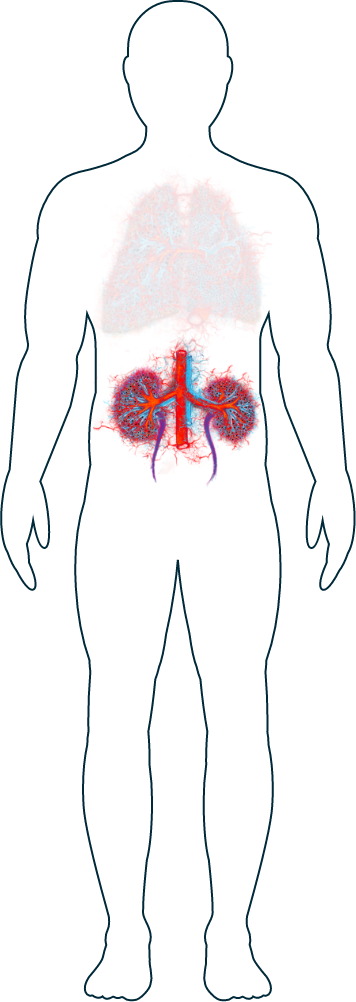
Kidneys
-
Blood in urine
The kidneys are among the most commonly affected organs in people with AAV.1 Symptoms can include inflammation, swelling and, sometimes, bursting of glomeruli, which are tiny blood vessels within the kidneys.2 Kidneys have millions of glomeruli, so your kidneys’ performance will not be affected if only a few glomeruli are damaged. However, If the damage continues over time, the overall performance of your kidneys may be reduced. If your doctors suspect that AAV is affecting your kidneys, they may carry out tests such as a blood test, urine test or biopsy to help confirm this.
Read more
If you notice any of these symptoms, it is important to tell your doctor and discuss which treatments are available to help you manage them.
Lungs
-
Difficulty breathing/shortness of breath
-
Cough
More than half of people with AAV will develop symptoms in their lungs at some point.1 These can range from mild to severe and may change over time. Although it may be alarming to experience some symptoms in the lungs, such as difficulty breathing,2 your doctor will be able to investigate your symptoms and prescribe treatments depending on what they find. Typically, symptoms in the lungs will be investigated by carrying out a lung biopsy or X-ray if they cause concern.
Read more
If you notice any of these symptoms, it is important to tell your doctor and discuss which treatments are available to help you manage them.
Nose
-
Sinus pain / pressure / congestion / infections
-
Nosebleeds (nose crusting)
Symptoms affecting the ear, nose and throat affect up to 3 in 10 people with MPA, but are more common in those with EGPA and GPA.1
If you have mild AAV symptoms within the nose, these will often be similar to having a cold, such as a runny nose. However, some people will also experience others such as nosebleeds, nose ‘crusting’, ulcers within the nose or in more severe cases, a condition called ‘saddle nose’, which means that part of the nose sinks inwards and surgery may be needed.2,3 If you are experiencing any of these symptoms, your doctor will be able to advise you about how best to manage them.
Read more
If you notice any of these symptoms, it is important to tell your doctor and discuss which treatments are available to help you manage them.
Eyes
-
Red, irritated eyes
-
Blurred vision
AAV can affect the eyes in different ways. Some people only experience mild inflammation, while others have more severe symptoms.
Red and irritated or painful eyes are the most common symptoms and some people have increased sensitivity to light.1 More serious types of inflammation can affect your long-term vision if left untreated, so talk to your doctor if you notice any changes in your eyes or sight. It is also important to see an optician for a yearly check-up so they can examine you thoroughly.
Read more
If you notice any of these symptoms, it is important to tell your doctor and discuss which treatments are available to help you manage them.
Ears
-
Hearing loss
The ears are closely connected to the nose and throat, so if you have symptoms in your ears, you may also experience others in your nose and throat (such as nosebleeds or a hoarse voice). Symptoms affecting the ear, nose and throat affect up to 3 in 10 people with MPA, but are more common in those with EGPA and GPA.1
AAV can cause symptoms in specific parts of the ear or affect it more generally. Whether the disease affects your ears will depend on a range of factors including the type of AAV you have. If you have GPA or EGPA, then you may experience a number of different symptoms (including hearing loss, infection and ear pain) that may occur to different levels in one or both of your ears.2 If you have MPA, you may experience sensorineural hearing loss, which is a type of hearing loss that can reduce the quality of sound you hear and limit your ability to hear quiet sounds. The treatment you receive for hearing loss will depend on the nature of your symptoms and your doctor will be able to discuss the most appropriate option for you.
Read more
If you notice any of these symptoms, it is important to tell your doctor and discuss which treatments are available to help you manage them.
Nerves
-
Numbness, tingling, or weakness (peripheral neuropathy)
AAV inflammation leading to damage to the peripheral nerves (which are in the hands, feet, arms and legs amongst other parts of the body) is most common in people with EGPA, but can also occur in those with GPA and MPA.1 People whose nerves are affected may experience numbness, freezing or a tingling sensation. If the damage continues, this can cause wrist drop (where the hand cannot be extended upwards from the wrist) or foot drop (where the foot cannot flex upwards). In rare cases, some people may experience muscle wasting, which makes it harder to grip.2
If you notice you are experiencing numbness or other symptoms, talk to your doctor, as they will be able to organise tests to check your nerve function, such as an EMG (electromyography) which measures the electrical activity in your muscles to check for nerve damage.
Read more
If you notice any of these symptoms, it is important to tell your doctor and discuss which treatments are available to help you manage them.
Skin
-
Rash and sores
AAV symptoms which affect the skin, such as rashes and sores, are quite common.1,2 These typically appear on the legs and feet but can affect other parts of the body as well. Some people experience blisters and small reddish bumps on their skin.2 Although these are often not painful, people sometimes find the impact on their appearance upsetting. If you need help coping with the physical or emotional impact of AAV on your skin, your doctor will be able to advise you about what treatments and support are available to you.
Read more
If you notice any of these symptoms, it is important to tell your doctor and discuss which treatments are available to help you manage them.
Heart
-
Unusually high blood pressure (hypertension)
AAV symptoms associated with the heart are rare, but you may notice that your blood pressure has increased.1 If you have a wearable device (such as a watch) that monitors your heart rate over the day this can help to document the changes you are experiencing. Talk to your doctor if you notice any changes. It is important to remember that changes to your heart rate can occur due to a number of reasons, such as increased stress or poor sleep quality. Your doctor will be able to check your pulse and blood pressure or use a heart rate monitor and, if necessary, they will discuss possible treatments to control your blood pressure.
Read more
If you notice any of these symptoms, it is important to tell your doctor and discuss which treatments are available to help you manage them.
Digestive sytem
-
Diarrhoea
-
Abdominal pain
Symptoms affecting the stomach, such as diarrhoea and abdominal pain, can occur due to inflammation.1 Diarrhoea and abdominal pain can be related to a range of different things, diagnosing them as being caused by AAV can be difficult. If you experience these symptoms, your doctor may use an imaging procedure such as a CT scan to look at your digestive system and check for damage caused by inflammation.
Read more
If you notice any of these symptoms, it is important to tell your doctor and discuss which treatments are available to help you manage them.
References and footnotes

Kidneys
-
Blood in urine
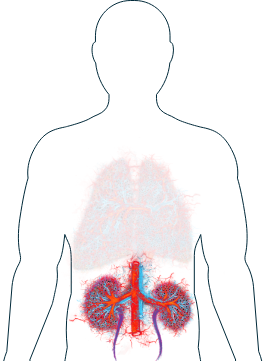
If you notice any of these symptoms, it is important to tell your doctor and discuss which treatments are available to help you manage them.
The kidneys are among the most commonly affected organs in people with AAV.1 Symptoms can include inflammation, swelling and, sometimes, bursting of glomeruli, which are tiny blood vessels within the kidneys.2 Kidneys have millions of glomeruli, so your kidneys’ performance will not be affected if only a few glomeruli are damaged. However, If the damage continues over time, the overall performance of your kidneys may be reduced. If your doctors suspect that AAV is affecting your kidneys, they may carry out tests such as a blood test, urine test or biopsy to help confirm this.

Lungs
-
Difficulty breathing/shortness of breath
-
Cough

If you notice any of these symptoms, it is important to tell your doctor and discuss which treatments are available to help you manage them.
More than half of people with AAV will develop symptoms in their lungs at some point.1 These can range from mild to severe and may change over time. Although it may be alarming to experience some symptoms in the lungs, such as difficulty breathing,2 your doctor will be able to investigate your symptoms and prescribe treatments depending on what they find. Typically, symptoms in the lungs will be investigated by carrying out a lung biopsy or X-ray if they cause concern.

Nose
-
Sinus pain / pressure / congestion / infections
-
Nosebleeds (nose crusting)
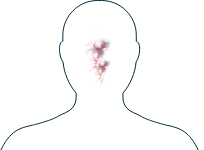
If you notice any of these symptoms, it is important to tell your doctor and discuss which treatments are available to help you manage them.
Symptoms affecting the ear, nose and throat affect up to 3 in 10 people with MPA, but are more common in those with EGPA and GPA.1
If you have mild AAV symptoms within the nose, these will often be similar to having a cold, such as a runny nose. However, some people will also experience others such as nosebleeds, nose ‘crusting’, ulcers within the nose or in more severe cases, a condition called ‘saddle nose’, which means that part of the nose sinks inwards and surgery may be needed.2,3 If you are experiencing any of these symptoms, your doctor will be able to advise you about how best to manage them.

Eyes
-
Red, irritated eyes
-
Blurred vision

If you notice any of these symptoms, it is important to tell your doctor and discuss which treatments are available to help you manage them.
AAV can affect the eyes in different ways. Some people only experience mild inflammation, while others have more severe symptoms.
Red and irritated or painful eyes are the most common symptoms and some people have increased sensitivity to light.1 More serious types of inflammation can affect your long-term vision if left untreated, so talk to your doctor if you notice any changes in your eyes or sight. It is also important to see an optician for a yearly check-up so they can examine you thoroughly.

Ears
-
Hearing loss

If you notice any of these symptoms, it is important to tell your doctor and discuss which treatments are available to help you manage them.
The ears are closely connected to the nose and throat, so if you have symptoms in your ears, you may also experience others in your nose and throat (such as nosebleeds or a hoarse voice). Symptoms affecting the ear, nose and throat affect up to 3 in 10 people with MPA, but are more common in those with EGPA and GPA.1
AAV can cause symptoms in specific parts of the ear or affect it more generally. Whether the disease affects your ears will depend on a range of factors including the type of AAV you have. If you have GPA or EGPA, then you may experience a number of different symptoms (including hearing loss, infection and ear pain) that may occur to different levels in one or both of your ears.2 If you have MPA, you may experience sensorineural hearing loss, which is a type of hearing loss that can reduce the quality of sound you hear and limit your ability to hear quiet sounds. The treatment you receive for hearing loss will depend on the nature of your symptoms and your doctor will be able to discuss the most appropriate option for you.

Nerves
-
Numbness, tingling, or weakness (peripheral neuropathy)
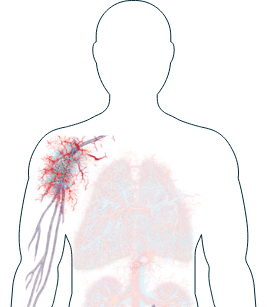
If you notice any of these symptoms, it is important to tell your doctor and discuss which treatments are available to help you manage them.
AAV inflammation leading to damage to the peripheral nerves (which are in the hands, feet, arms and legs amongst other parts of the body) is most common in people with EGPA, but can also occur in those with GPA and MPA.1 People whose nerves are affected may experience numbness, freezing or a tingling sensation. If the damage continues, this can cause wrist drop (where the hand cannot be extended upwards from the wrist) or foot drop (where the foot cannot flex upwards). In rare cases, some people may experience muscle wasting, which makes it harder to grip.2
If you notice you are experiencing numbness or other symptoms, talk to your doctor, as they will be able to organise tests to check your nerve function, such as an EMG (electromyography) which measures the electrical activity in your muscles to check for nerve damage.

Skin
-
Rash and sores

If you notice any of these symptoms, it is important to tell your doctor and discuss which treatments are available to help you manage them.
AAV symptoms which affect the skin, such as rashes and sores, are quite common.1,2 These typically appear on the legs and feet but can affect other parts of the body as well. Some people experience blisters and small reddish bumps on their skin.2 Although these are often not painful, people sometimes find the impact on their appearance upsetting. If you need help coping with the physical or emotional impact of AAV on your skin, your doctor will be able to advise you about what treatments and support are available to you.

Heart
-
Unusually high blood pressure (hypertension)

If you notice any of these symptoms, it is important to tell your doctor and discuss which treatments are available to help you manage them.
AAV symptoms associated with the heart are rare, but you may notice that your blood pressure has increased.1 If you have a wearable device (such as a watch) that monitors your heart rate over the day this can help to document the changes you are experiencing. Talk to your doctor if you notice any changes. It is important to remember that changes to your heart rate can occur due to a number of reasons, such as increased stress or poor sleep quality. Your doctor will be able to check your pulse and blood pressure or use a heart rate monitor and, if necessary, they will discuss possible treatments to control your blood pressure.

Digestive sytem
-
Diarrhoea
-
Abdominal pain
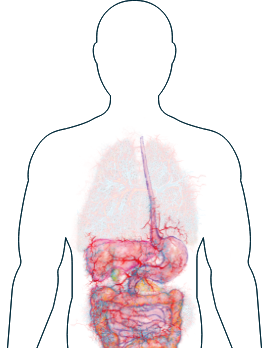
If you notice any of these symptoms, it is important to tell your doctor and discuss which treatments are available to help you manage them.
Symptoms affecting the stomach, such as diarrhoea and abdominal pain, can occur due to inflammation.1 Diarrhoea and abdominal pain can be related to a range of different things, diagnosing them as being caused by AAV can be difficult. If you experience these symptoms, your doctor may use an imaging procedure such as a CT scan to look at your digestive system and check for damage caused by inflammation.

Are you visiting the website as someone living with AAV or as a carer?
On a scale from 0 to 10, how likely are you to recommend this page to another AAV patient/carer?
0
1
2
3
4
5
6
7
8
9
10
Thank you for your feedback!
We appreciate you taking the time to share your thoughts with us.
Your responses are invaluable in helping us enhance our website and provide a better experience for all users.


